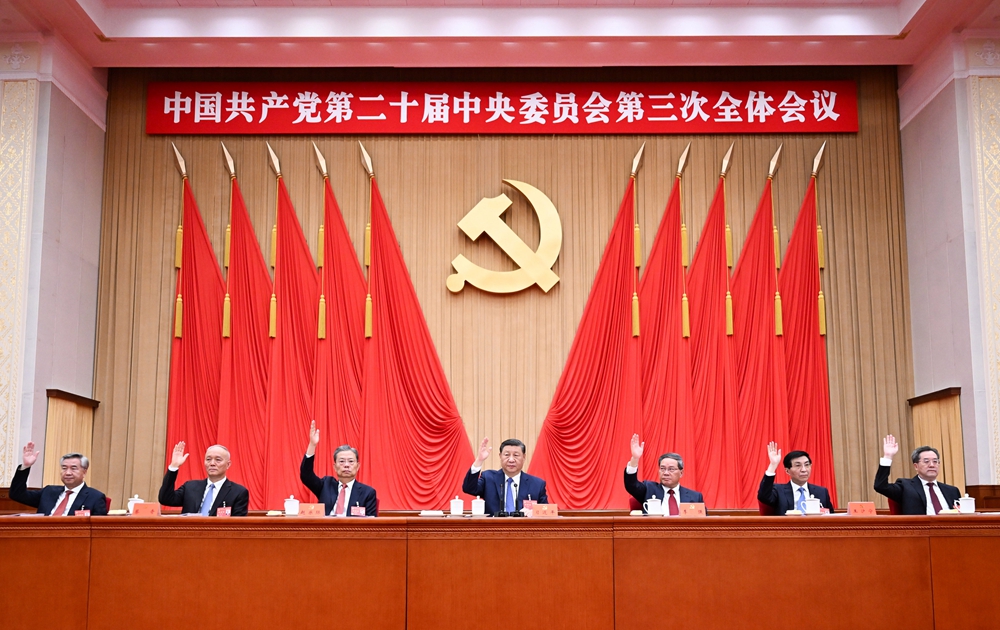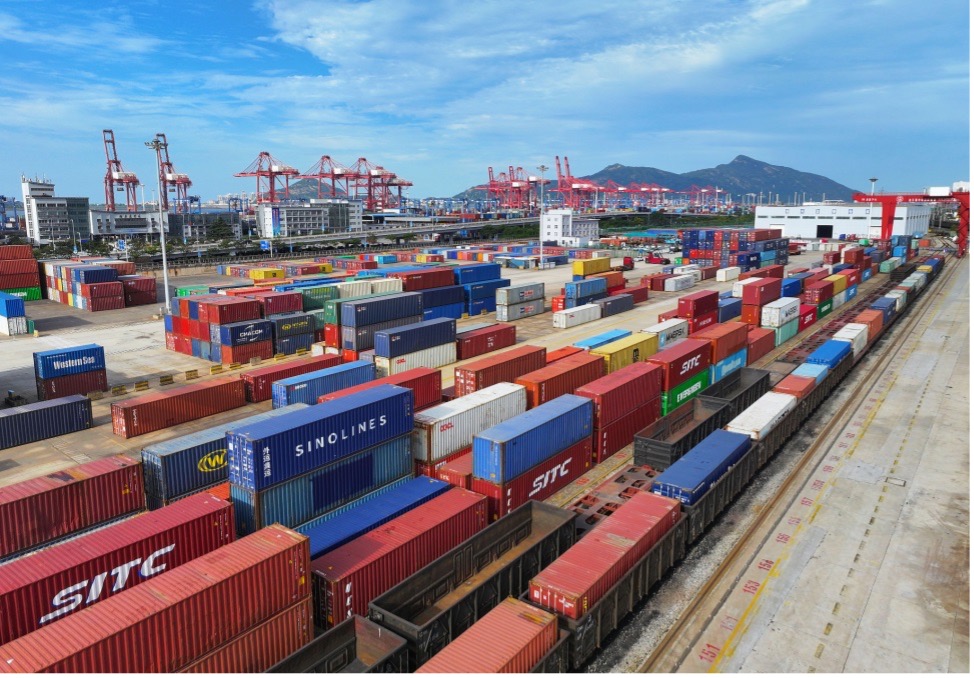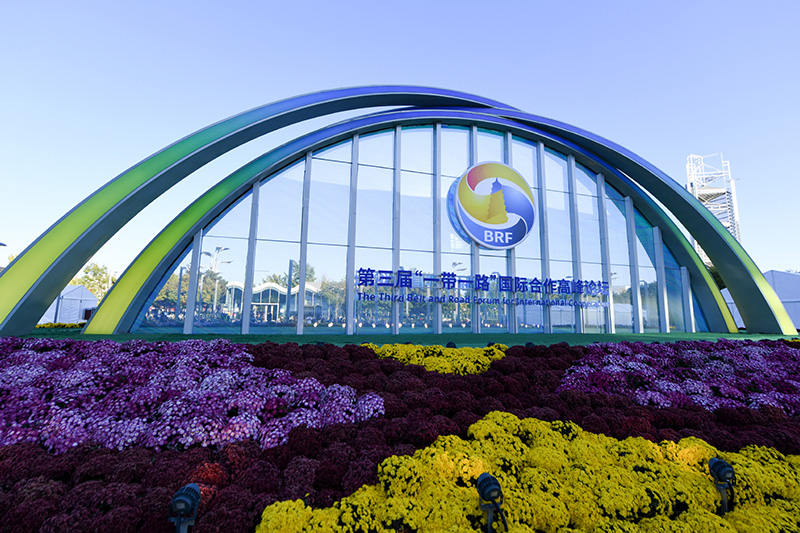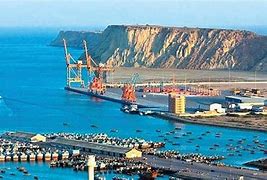In recent years, economic globalization has been overshadowed by anti-globalization sentiments, with some Western countries repatriating capital, industries and jobs, boycotting foreign enterprises under the guise of “national security.” Moreover, some Western media have accused China of regressing in openness and refused to acknowledge its market economy status. No matter how open China is, it seems the country will never meet Western standards.
But has China’s openness declined as accused?
The following numbers will clearly show the answer is NO. China has maintained its position as the world’s largest trading nation in goods for 7 consecutive years. In the first half of 2024, the export value of products like automobiles, ships, and integrated circuits increased by 22.2 percent, 91.1 percent, and 25.6 percent year-on-year, respectively.
China has been actively expanding its circle of friends in global economic and trade cooperation. Its trade with partner countries under the Belt and Road Initiative (BRI) increased by 7.2 percent year-on-year in the first half of 2024. The number of China Railway Express freight trains surpassed the target of 10,000, 19 days ahead of the same target period in the previous year, with a total cargo volume increase of 11 percent.
China offers visa-free entry to an increasing number of countries. In the first half of 2024, over 14 million foreigners entered China, nearly doubling the number who entered visa-free year-on-year. With a series of such measures implemented swiftly, China is opening up more of its sectors and creating more opportunities for foreign investments.
Despite anti-globalization sentiments, China’s doors remain open and will only open wider. In the Communique of the Third Plenary Session of the 20th Central Committee of the Communist Party of China, it was stated that “opening up is a defining feature of Chinese modernization. We must remain committed to the basic state policy of opening to the outside world and continue to promote reform through opening up. Leveraging the strengths of China’s enormous market, we will enhance our capacity for opening up while expanding cooperation with other countries and developing new institutions for a higher-standard open economy. We will steadily expand institutional opening up, deepen the foreign trade structural reform, further reform the management systems for inward and outward investment, improve planning for regional opening up, and refine the mechanisms for high-quality cooperation under the Belt and Road Initiative.”

Openness is ingrained in the cultural fabric of China
China’s philosophy of openness operates at a civilizational level, rather than merely to enhance competitiveness.
Openness and development are a continuation of the tradition of inclusiveness and integration of the Chinese nation. Drawing from the accomplishments of global human civilization is the secret to the sustained development of the Chinese nation. From China opening up to the world to the world opening up to China, from the East learning from the West to mutual learning between the East and the West as well as mutual inclusiveness between the global North and the South, China’s philosophy of openness is constantly evolving.
From developing for the revitalization of China to aligning its own development goals with those of the world and providing more and better public goods to the international community, China’s philosophy of development also keeps upgrading.
China is a firm believer in the rule that openness brings progress, while isolation inevitably leads to backwardness. The painful lesson China learned in the century following the Opium Wars in the 19th century was that backwardness leaves one vulnerable to attack. In fact, the reason for vulnerability was the failure to open up to the world.
In the 19th century, China’s self-sufficient small-scale peasant economy was quickly defeated by the open, industrial civilization of the West. Today, China is the only country that has written “openness” into its constitution, making it a national policy. The reform and opening-up policy represents a correct path that fits China’s national conditions and meets the needs of the times.

Therefore, China has implemented a more proactive opening-up strategy, exerted efforts to build a global network of high-standard free trade zones, accelerated the development of free trade pilot zones and the construction of the Hainan Free Trade Port, and built the BRI into a highly popular international public good and a platform for international cooperation.
High-level opening-up in progress
China is actively promoting high-level opening-up in all aspects. Since the 18th National Congress of the Communist Party of China, President Xi Jinping has increasingly emphasized the role of opening up in driving reform. He has repeatedly stressed the need to proactively align with high-standard international trade and economic rules, steadily expanding institutional opening up in areas such as regulations, management and standards. This approach aims to establish new benchmarks for openness and develop a higher-level open economy. At the session, President Xi reiterated the importance of steadily expanding institutional opening up.
High-level institutional openness means that the focus of China’s openness will shift from trade in goods to trade in services, and from the free flow of commodities and factors of production to rules-based institutional openness. In recent years, China has completed the negotiations for a Comprehensive Agreement on Investment (CAI) with the European Union and applied to join the Comprehensive and Progressive Agreement for Trans-Pacific Partnership (CPTPP) and the Digital Economy Partnership Agreement (DEPA).
From systemic reform to institutional openness, China is accelerating its efforts to align with high international economic and trade standards and actively participating in international economic and trade rule negotiations.
With high-level opening-up, China’s proactive openness is becoming more substantive. Represented by the BRI and the China International Import Expo (CIIE), China’s focus is shifting from passive to proactive openness, from open development to development-oriented openness, and from opening up to promote reform to reforming to promote openness. Initiatives proposed by China like the BRI are not merely about Chinese enterprises going global, but also about Chinese products, services, ideas and even development models being well received.
Under the BRI, China is actively enhancing its cooperation with partner countries in development strategies, institutional mechanisms, and exchange platforms, promoting bilateral and regional cooperation. Examples include the Russia-led Eurasian Economic Union, Kazakhstan’s “Bright Road” initiative, Indonesia’s Global Maritime Fulcrum vision, South Africa’s Economic Reconstruction and Recovery Plan, and Egypt’s Suez Canal Corridor Development Project.

Prominent problems in the world today can be found in the imbalance in economic development between the global North and South, the slowdown of economic globalization, and the significant disarray in economic policies among countries. In contrast to the common practice in the U.S. and Europe of actively expanding exports and reducing imports to narrow trade deficits, China continues to increase imports.
Under the leadership of President Xi Jinping, the China International Import Expo (CIIE) was established as the world’s first national-level exhibition with imports as its theme, offering the vast domestic market of China to other countries and therefore becoming a globally shared international public good. At the 6th CIIE in 2023, 72 countries and international organizations participated in national exhibitions, while 3,486 enterprises from 128 countries and regions showcased 442 new products, technologies and services at the corporate exhibitions.
Additionally, President Xi has planned the China International Fair for Trade in Services (CIFTIS) and the China International Consumer Products Expo (CICPE) to further his vision for trade liberalization and economic globalization.
Sticking to principles and bottom lines while opening up
China has principles and bottom lines in its openness. Under no circumstances will China compromise its core national interests and the fundamental interests of its people, and it will resolutely safeguard its sovereignty and national dignity.
Accusations that China is backtracking on openness, when the country is simply adhering to its principles and avoiding losses, are seriously flawed and morally dubious. Repeated rhetoric by some Western countries of China’s backtracking in openness is merely an attempt to cover up their own decline.
By moving their supply chains to politically and economically “safe” or “low-risk” countries, the West aims to undermine China’s position as “the world’s factory,” allowing countries like India and Vietnam to divert manufacturing from China and replace it so as to reshape global supply chains in their favor. Those accusations are attempts of the West to find excuses for decoupling with China and create some “new globalization” or “hemispheric globalization.”
Chinese President Xi Jinping has emphasized on multiple occasions that the world will benefit from China’s well-being and vice versa. Amidst anti-globalization sentiments, China continues to pursue high-level opening-up, align with high-standard international economic and trade rules, steadily promote institutional opening up, enhance the interaction between domestic and international markets and resources, consolidate foreign trade and investments, and foster new advantages in international economic cooperation and competition. China’s philosophy and practice of openness and development have transformed from passive to proactive and provided Chinese solutions to promote globalization.
The author Wang Yiwei is Professor at Renmin University of China, expert at the China Council for the Promotion of International Trade, and senior research fellow at the Taihe Institute.
Related Article:
Khunjerab Pass opened for Pakistan-China trade after three years

















